
This picture is one of the last major works of Rembrandt. The sad canvas illustrates the painful death of Lucretia, which led to the uprising and further development of the Roman Republic, and demonstrates the work of the author with light and shade, giving the main character three-dimensional realism. Such a manner to create lighting, of course, borrowed from Caravaggio and his followers.
The expressive eyes and facial expressions of Lucretia’s virtue give emotional strength to the picture. The psychologically intense “Suicide of Lucretia” fully justifies the status of Rembrandt as one of the best Dutch realists.
The tragedy of Lucretia – the exemplary wife of Lucius Tarquinius Collatina – began when the woman came into contact with the son of Tarquinius Proud, the cruel Etruscan king of Rome. Sextus Tarquinius, threatening with weapons and reprisals against the family of Lucretia, dishonored the unfortunate one, because she was frightened by the death of loved ones, scandals and shame by doing everything the son of the king wanted. But then, she tells about what happened to her husband and father, after which, having received their oath of revenge, Lucretia pinned herself to death. According to the book of the history of Libya in Rome, after the suicide of a woman, the monarchy was overthrown.
In order to focus the viewer’s attention exclusively on psychological aspects, Rembrandt deprives the composition of any distracting details and factors. In addition, unlike most of the paintings on this topic, in which Lucretia is depicted naked, which gave erotic undertones to the works, Rembrandt “dresses” the heroine in rich noble clothes. Dark and deep background gives a dark mood and more expressiveness to the dramatic position.
To calm herself down, Lucrece grabs the curtain cord – a symbolic image of the end of her life. At the moment captured in the picture, the heroine has already pierced herself and pulled out a dagger, the blood begins to seep through her dress. The line extending the dagger, chains, ropes, and folds of clothing intersect at the site of the mortal wound. Her dark eyes are filled with sadness, and her pale face indicates the approaching death.
The pose of Lucretia and her facial expression is strikingly reminiscent of the work “David with the Head of Goliath” by Caravaggio. It is possible that Rembrand saw the original or a copy of this work, which inspired him to create such a gloomy canvas.
 Bathsheba by Rembrandt Harmens Van Rhine
Bathsheba by Rembrandt Harmens Van Rhine Self Portrait at Easel by Rembrandt Harmens Van Rhine
Self Portrait at Easel by Rembrandt Harmens Van Rhine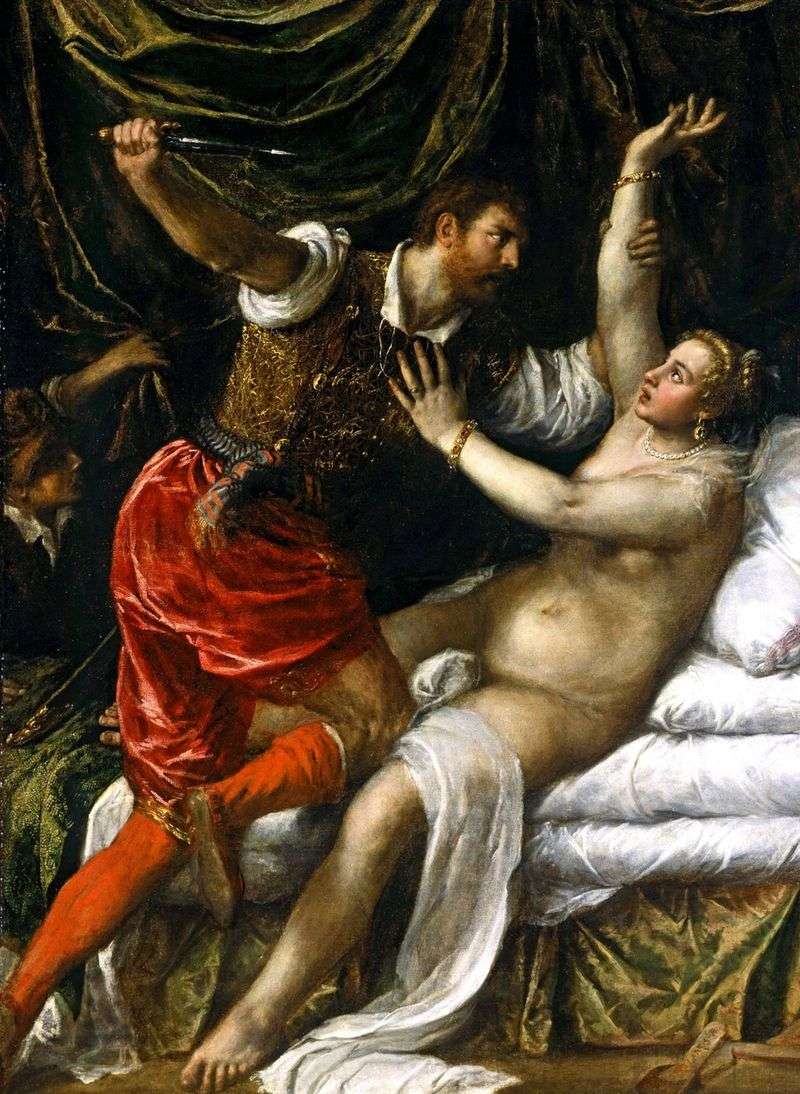 Tarquinius and Lucretia by Titian Vecellio
Tarquinius and Lucretia by Titian Vecellio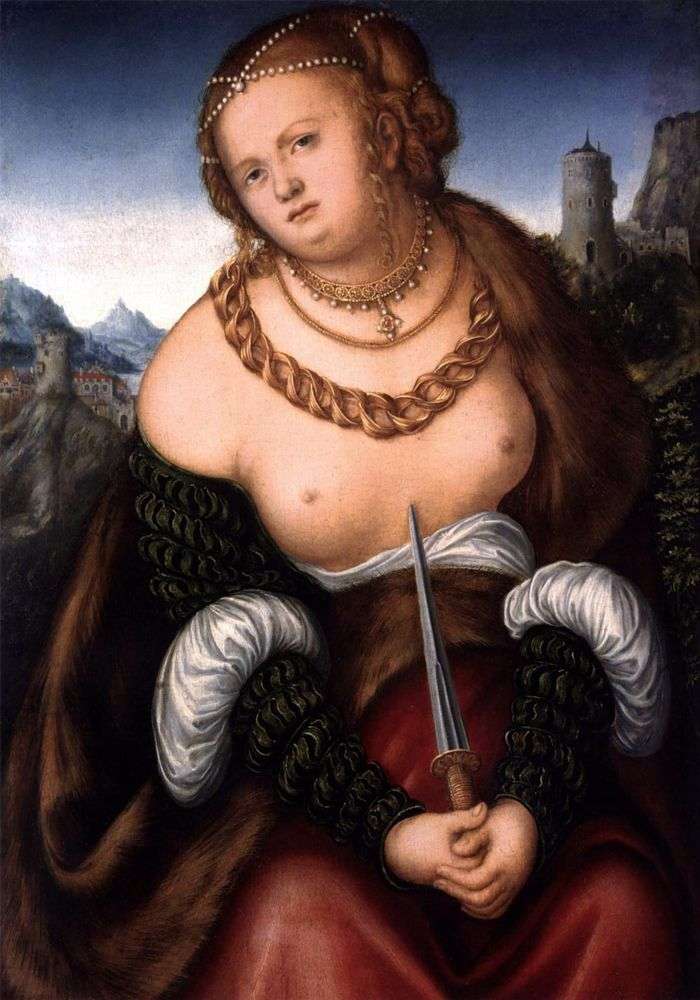 Lucretia by Lucas Cranach
Lucretia by Lucas Cranach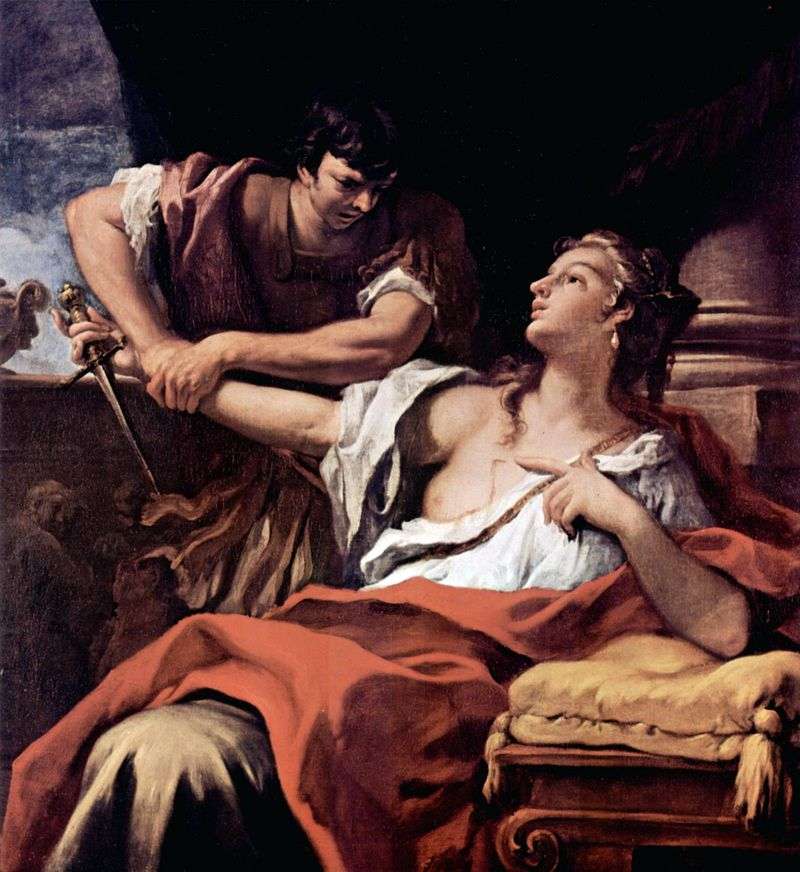 Lucretia and Collatin by Sebastiano Ricci
Lucretia and Collatin by Sebastiano Ricci David and Uriah by Rembrandt Harmens Van Rhine
David and Uriah by Rembrandt Harmens Van Rhine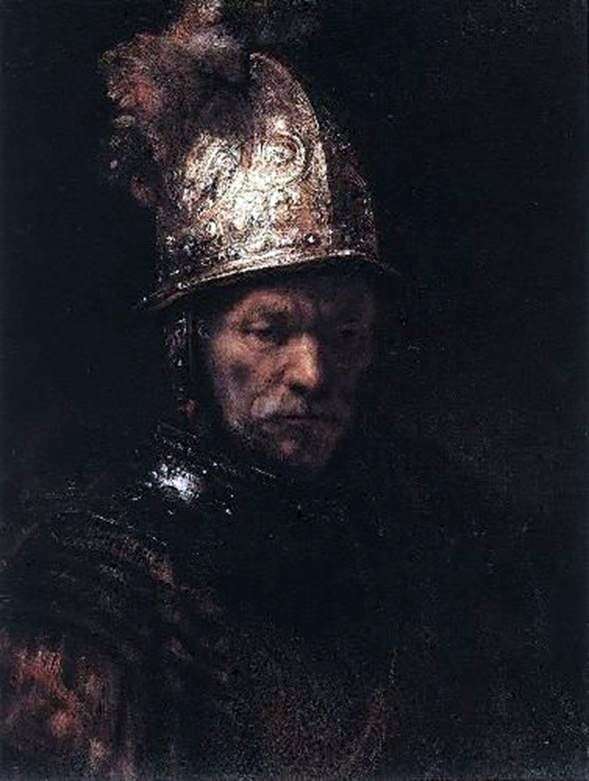 The Man in the Golden Helmet by Rembrandt Harmens Van Rhine
The Man in the Golden Helmet by Rembrandt Harmens Van Rhine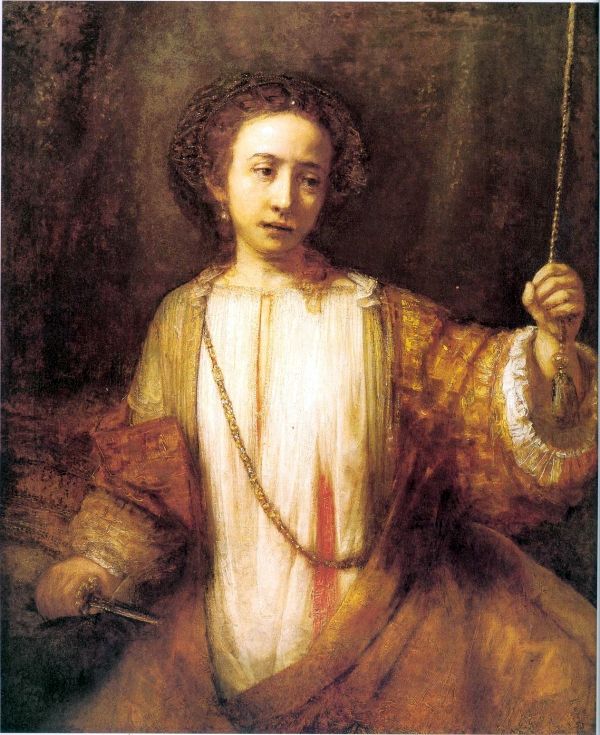 Le suicide de Lucrèce – Rembrandt Harmenszoon Van Rijn
Le suicide de Lucrèce – Rembrandt Harmenszoon Van Rijn